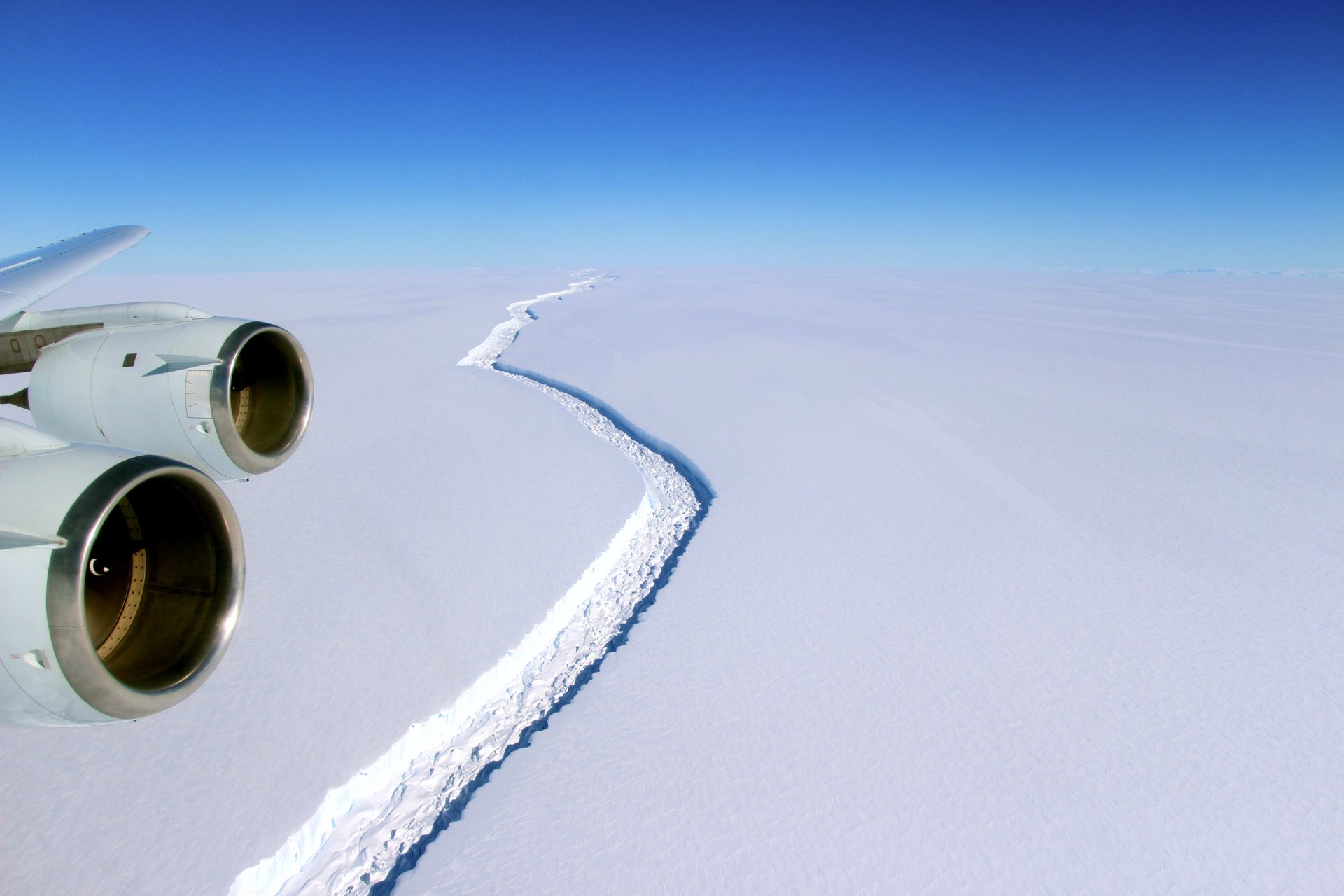That massive iceberg just broke off Antarctica, and maps will have to be redrawn
Since January of this year, a massive, 2,200 square-mile (5,698 square-km), trillion-ton iceberg has been on the brink of breaking away from the Larsen C ice shelf in Antarctica. On Wednesday (July 12) scientists at MIDAS, a collaborative research project from Swansea University and Aberystwyth University in the United Kingdom, confirmed that it had finally happened—one of the largest icebergs on Larsen C has cut ties with its home continent, and is now on an aimless voyage into the Weddell Sea.


Since January of this year, a massive, 2,200 square-mile (5,698 square-km), trillion-ton iceberg has been on the brink of breaking away from the Larsen C ice shelf in Antarctica. On Wednesday (July 12) scientists at MIDAS, a collaborative research project from Swansea University and Aberystwyth University in the United Kingdom, confirmed that it had finally happened—one of the largest icebergs on Larsen C has cut ties with its home continent, and is now on an aimless voyage into the Weddell Sea.
“The remaining shelf will be at its smallest ever known size,” Adrian Luckman, a glaciologist at Swansea University working on Project MIDAS, told the New York Times (paywall). “This is a big change. Maps will need to be redrawn.”
The Larsen C ice shelf is the fourth-biggest on the continent, and covers about 19,300 square miles of ice. The iceberg that broke off of it made up roughly 12% of its total volume.
The good news is, this iceberg was already floating in the ocean, so it won’t actually contribute to sea level rise. However, this iceberg was part of the many ice shelves that surround the continent. Now that this chunk of ice is gone, scientists are worried that the rest of the ice on and around Antarctica is at risk of coming loose, as the Washington Post reports.
Without the protection of this outward iceberg, inner ice could be exposed to warmer ocean waters. If this is the case, it may be easier for more ice from the Larsen C shelf to break away, which make make any land ice flow into the ocean more quickly. Land ice floating into the ocean does contribute to sea level rise: For every 360 billion tons of ice that reach the ocean, sea levels worldwide rise by 1 millimeter. For context, the average sea level rise per year during the 20th century was 1.7 millimeters (pdf).
Scientists can’t link the iceberg’s break directly to climate change, because calving is a natural process in any glacier. It depends on both air and water temperatures. However, the rift between the iceberg and the shelf began growing exceptionally rapidly—almost 8 miles in four weeks—in December. It’s also worth noting that at the moment, it’s the dead of winter in Antarctica.